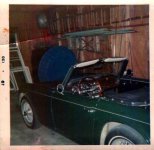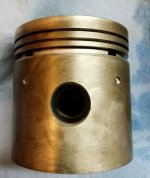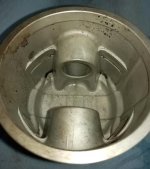When going from 83 to 87mm pistons, what modifications (if any) are required in parallel to ensure a good running engine? I would like to keep the intake manifold original and not chamfer or port the head, but am concerned this might be too restrictive for the increased capacity. I understand the higher compression ratio will result in increased heat and premium fuel may be required, but other than that are there any real concerns? FYI, I have a 3A with an early high port head. I do plan to convert to an electric fan/alternator/narrow belt, but everything else will be original.
Just a quick background - the engine was rebuilt about 15 years ago with 87mm pistons and setup on the frame without the body. It seemed to run hot during initial startup back then, and the engine has not ran since. Due to sitting such a long time, I recently disassembled to clean. If multiple other modifications will be required with the 87's, I will probably just get new liners and rings for my original 83's.
Joel
Just a quick background - the engine was rebuilt about 15 years ago with 87mm pistons and setup on the frame without the body. It seemed to run hot during initial startup back then, and the engine has not ran since. Due to sitting such a long time, I recently disassembled to clean. If multiple other modifications will be required with the 87's, I will probably just get new liners and rings for my original 83's.
Joel

 Hi Guest!
Hi Guest!

 smilie in place of the real @
smilie in place of the real @
 Pretty Please - add it to our Events forum(s) and add to the calendar! >>
Pretty Please - add it to our Events forum(s) and add to the calendar! >> 


